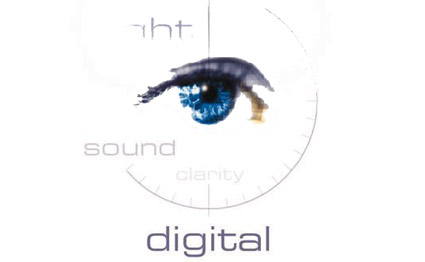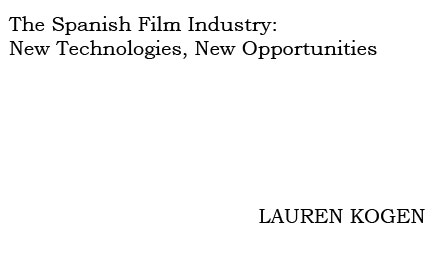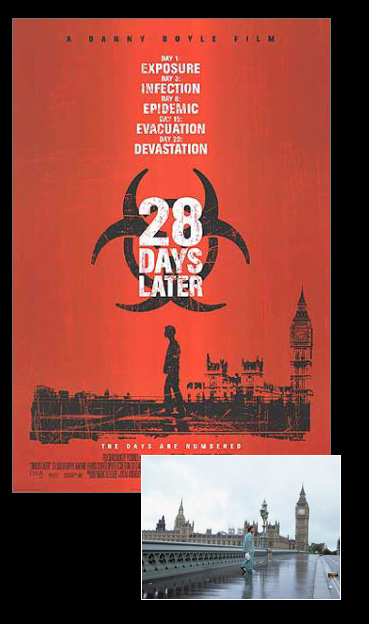

The difference between digital and celluloid film
I'll work for Kodak just as much as for Sony or Panasonic, but when I see the work I've done reach the screen, the work I'm most proud of, that I prefer, is on 35mm film. (Tomás PLADEVALL, Cinematographer) 17
The general public doesn't understand the digital debate. What they want are good stories, good images, and that's it. (BIGAS LUNA, director) 18
While it is not imperative that every moviegoer or policy maker understands the endless intricacies of all the technologies currently available, many of those involved in the debate prematurely dismiss digital film as inferior without a real understanding of the capabilities and limitations of the medium. Given that celluloid film has existed for over a century without radical changes in the technology (aside perhaps from the coming of synch sound), it's unsurprising that some cineastes have become attached to the medium. The high image resolution of 35mm film and its rich range of colors are frequently cited in sits support. Furthermore, most of those opposed to digital film not only denounce its inferior picture quality, but also argue that the inherent ‘look' of 35mm is fundamental to the film medium. Whether this view is overly nostalgic or not, there are certainly inescapable visual differences between the two systems.
The wide range of cameras available complicates the digital-versus-celluloid debate. Many people have seen films shot on low-quality digital video and assume that all digital cameras will produce similar image quality, but there is an enormous gap between the lowest and highest-end cameras. In order to look at the potential of digital film, it makes most sense to compare 35mm celluloid with the best digital equipment available. Currently, these are the high definition (HD) cameras capable of recording at 1080/ 24p, which means that (1) the image has approximately 1,920 x 1,080 resolution, with 1,080 horizontal lines (scan lines) each containing 1,920 pixels per line, (2) the camera records the image at 24 frames per second (fps), just like a 35mm film camera, and (3) each image is scanned progressively(p) – that is , it scans the entire image at once, as opposed to recording it as an interlaced image in two halves, as is the case with television or standard video. Some cameras are also capable of recording at different speeds or resolutions, depending on the needs of the production.
Of course there is a wide array of cameras available with varying capabilities, and there are many other technical features that affect the quality of the camera and its image. Because the industry is in its infancy, many of the specifications for these cameras are not standardized, and there is constant debate as to which features are most vital to image quality and which operating systems are superior. For the time being, however, the above are the generally accepted guidelines for commercially available, high-performing HD cameras. Currently, these cameras are the only capturing systems capable of achieving an image similar to film. Unfortunately, just like traditional film cameras, they can be quite expensive, with the highest quality cameras running upward of US$100,000 apiece. However, many other lower-end formats exist, creating possibilities for films of every budget. The most affordable of these are consumer, MiniDV (Digital Video) cameras. They do not have such a high resolution and therefore do not project well on large screens, but can be purchased for less than US$500. Compared to the 1,080 lines of horizontal resolution of the highest quality camera, the MiniDV contains approximately 500 horizontal lines. In between the two extremes lie several different types of DV and HD pro-sumer cameras. One that has been popular is Panasonic's AJ-SPX800 DVCPro, with 750 lines of horizontal resolution and currently priced at around US$20,000.

In many instances, HD video can be virtually indistinguishable from celluloid, but certain circumstances make the differences more apparent. In HD small details may be blurred or show aliasing, fast motions are often stilted, there is a much greater depth of field (which can make the image look flat), and there is a lower contrast ratio than in 35mm film, reducing the range of deep blacks and bright whites. Additionally, digital film creates an extremely crisp, clean picture, and can make the image look more artificial. This can be jarring to an audience accustomed to celluloid, since the softer picture, as well as the pops, scratches, and fading which are common to celluloid – and are part of what creates the classic film ‘look' – are absent. Digital proselytes, however, see this as a virtue. José María Aragonés, the Artistic Director of Filmtel in Barcelona , one of the most technologically advanced post-production houses in Spain , believes that it is purely a matter of growing accustomed to the new image. He compares the advent of digital film to that of digital audio, but believes that the current changeover will go even more smoothly: ‘Everyone wanted records because they thought they were analog and therefore better. But now everyone's adapted to CD's.'19


